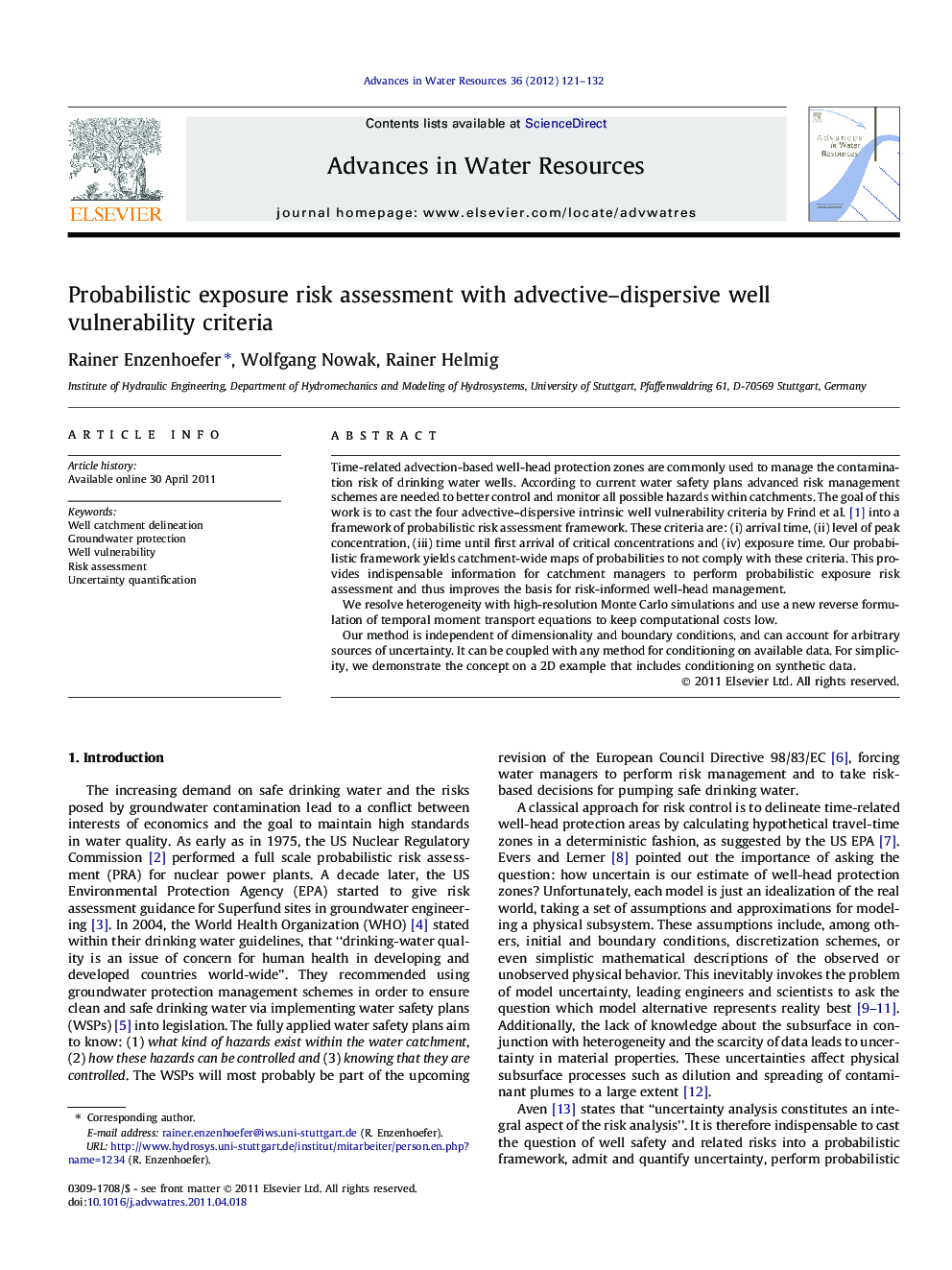| Article ID | Journal | Published Year | Pages | File Type |
|---|---|---|---|---|
| 4526032 | Advances in Water Resources | 2012 | 12 Pages |
Time-related advection-based well-head protection zones are commonly used to manage the contamination risk of drinking water wells. According to current water safety plans advanced risk management schemes are needed to better control and monitor all possible hazards within catchments. The goal of this work is to cast the four advective–dispersive intrinsic well vulnerability criteria by Frind et al. [1] into a framework of probabilistic risk assessment framework. These criteria are: (i) arrival time, (ii) level of peak concentration, (iii) time until first arrival of critical concentrations and (iv) exposure time. Our probabilistic framework yields catchment-wide maps of probabilities to not comply with these criteria. This provides indispensable information for catchment managers to perform probabilistic exposure risk assessment and thus improves the basis for risk-informed well-head management.We resolve heterogeneity with high-resolution Monte Carlo simulations and use a new reverse formulation of temporal moment transport equations to keep computational costs low.Our method is independent of dimensionality and boundary conditions, and can account for arbitrary sources of uncertainty. It can be coupled with any method for conditioning on available data. For simplicity, we demonstrate the concept on a 2D example that includes conditioning on synthetic data.
► First-time probabilistic risk assessment for intrinsic well vulnerability criteria. ► We separate between dilution and uncertainty of plume location. ► Fully Bayesian updating of geostatistics and vulnerabilities with flow/field data. ► We deliver indispensable information for water managers following water safety plans. ► Method can handle any dimensionality, boundary conditions, sources of uncertainty.
